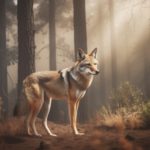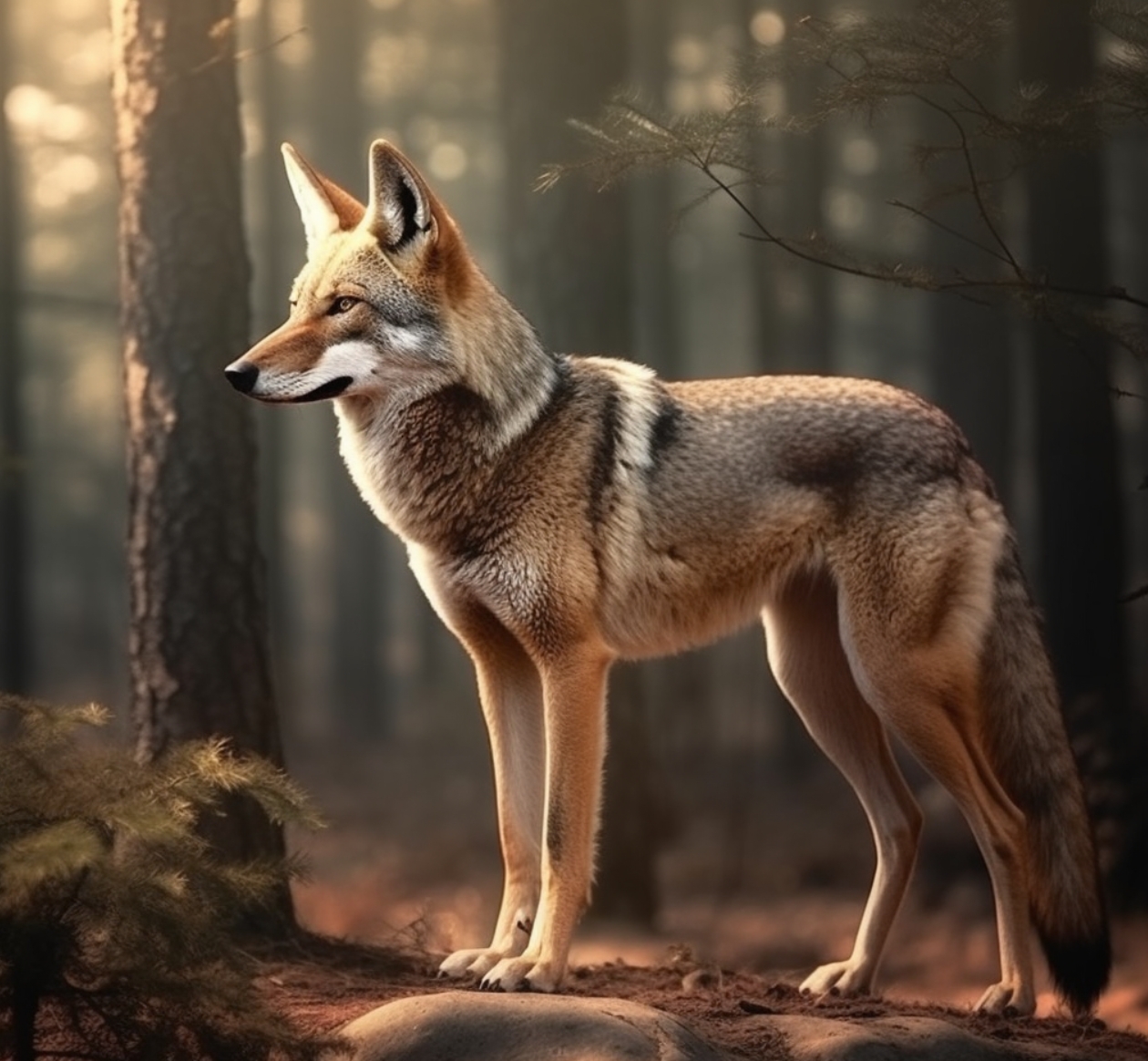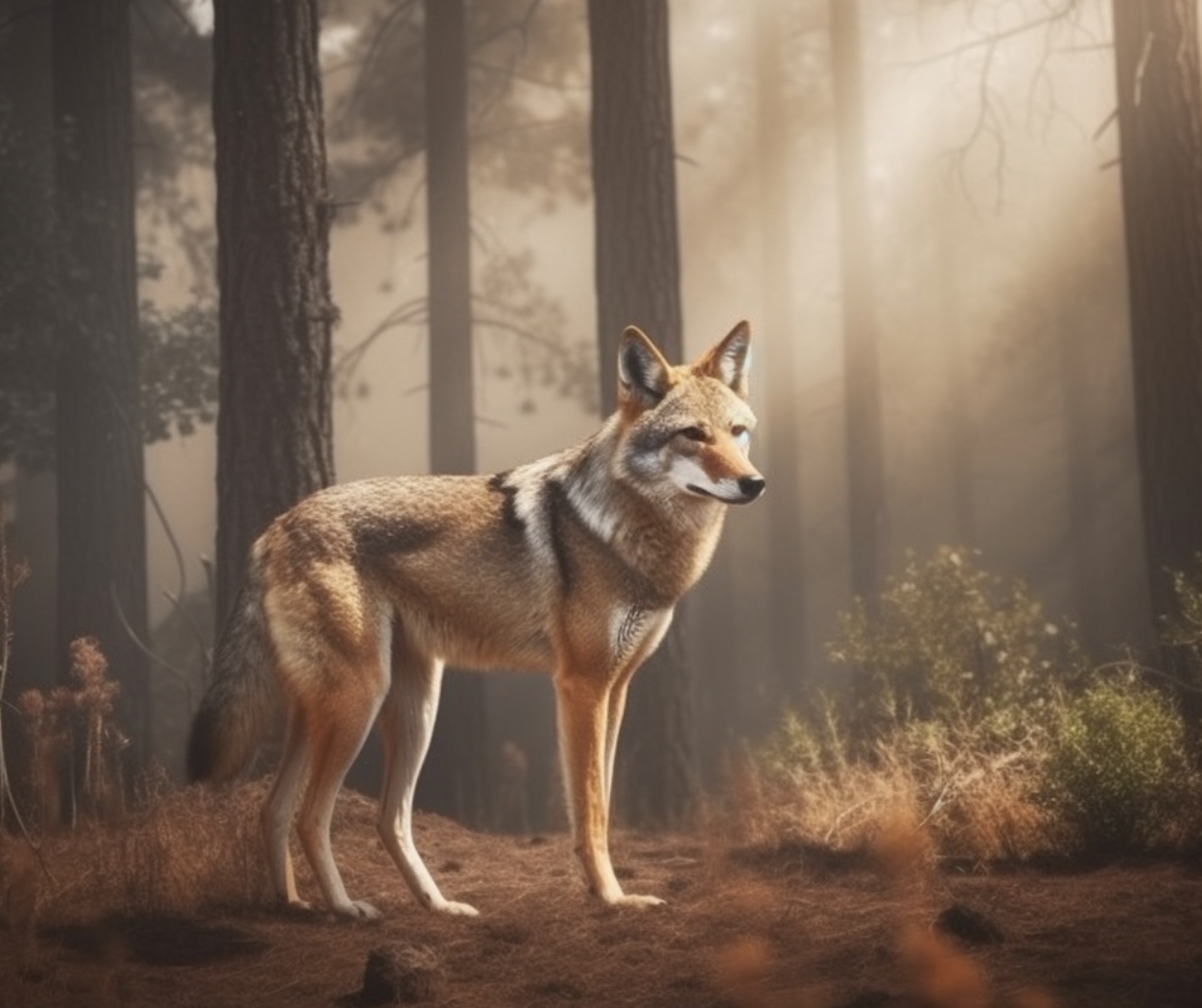Coyotes are fascinating creatures that have captured the imagination of many. But can these wild animals be domesticated? In this article, we’ll take a deep dive into the world of coyotes and explore whether it’s possible to tame these beautiful, elusive animals.
Understanding Coyotes: Facts and Figures
Contents
First, let’s get to know our subject a little better. Coyotes (Canis latrans) are medium-sized canines native to North America, ranging from Canada to Mexico. They’re highly adaptable animals, capable of living in various habitats, including forests, grasslands, deserts, and even urban environments. Some quick facts about coyotes:
- They’re omnivores, eating both plants and animals.
- They have a strong sense of smell, hearing, and sight.
- Coyotes are known for their incredible speed, reaching up to 43 miles per hour.
- They can jump up to 6 feet in the air.
- Coyotes are generally nocturnal, being most active during dusk and dawn.
- Their distinctive vocalizations, including howls, yips, and barks, are used to communicate with other coyotes.
Can Coyotes Be Domesticated?
The short answer is no. Coyotes are wild animals, and their natural instincts make them unsuitable for domestication. While some people have attempted to raise coyotes as pets, this is not recommended for several reasons:
- Genetic differences: Unlike dogs, which were domesticated from wolves thousands of years ago, coyotes have not undergone the same genetic changes that make them suitable companions for humans. Their wild instincts remain strong, making them unpredictable and potentially dangerous.
- Social structure: Coyotes have a complex social structure, with packs usually consisting of a breeding pair and their offspring. In captivity, this natural hierarchy is disrupted, leading to stress and aggression.
- Legal issues: In many jurisdictions, it is illegal to keep a coyote as a pet without proper permits or licenses. Even with permission, the responsibility of caring for a wild animal is immense and should not be taken lightly.
- Ethics: It’s important to remember that coyotes are wild animals with specific needs that are difficult to meet in a domestic setting. Attempting to domesticate a coyote can be harmful to the animal and potentially dangerous to humans.
Encountering Coyotes: Safety and Coexistence
As human populations expand into coyote habitats, encounters between the two species are becoming more common. It’s essential to know how to coexist with these creatures safely and responsibly. Here are some tips on how to handle coyote encounters:
- Maintain a safe distance and never approach a coyote.
- If a coyote approaches you, scare it away by making loud noises and waving your arms.
- Secure your property by building a coyote-proof fence and removing attractants like pet food and garbage.
- Keep pets, especially small dogs and cats, indoors or on a leash during coyote-active hours to prevent attacks.
- If you have a problem with coyotes on your property, follow these guidelines to get rid of them humanely and effectively.
- Educate yourself on coyote behavior to better understand and predict their actions.
While coyote attacks on humans are rare, it’s important to be aware of the potential risks. In the unlikely event of an attack, remain calm and assertive. Stand your ground, make yourself look larger, and use any available objects to create a barrier between you and the animal.
Coyotes in the Ecosystem: Predators and Prey
Coyotes play a crucial role in maintaining the balance of their ecosystems. They’re both predators and prey, helping to regulate populations of smaller animals like rodents and rabbits, while also being hunted by larger predators such as wolves, bears, and mountain lions. Learn more about the predators and prey of coyotes to appreciate their place in the natural order.
It’s important to remember that coyotes are an integral part of the environment and should be respected as such. While they may not be suitable for domestication, their wild nature is what makes them uniquely fascinating.
The Art of Coyote Calling
For those interested in observing coyotes in the wild, coyote calling can be an exciting way to lure them closer for a better look. Coyote calling involves using specialized calls or devices to imitate the sounds of coyotes or their prey, drawing them in out of curiosity or hunger. Keep in mind that this activity should be done responsibly and with the intent of observing, not harming the animals.
Coyotes in Winter: Do They Hibernate?
Unlike some other animals, coyotes do not hibernate during the winter months. They remain active year-round, adapting to the changing weather and food availability. In colder climates, their fur grows thicker to help insulate them from the cold, and they may alter their hunting habits to find food more efficiently.
Conclusion
In conclusion, while it’s clear that coyotes cannot be domesticated, they remain an important and captivating part of our natural world. As humans continue to encroach on their habitats, it’s crucial that we learn to coexist with these animals safely and responsibly.
By understanding the nature and habits of coyotes, we can appreciate their role in the ecosystem and enjoy observing them from a respectful distance. Keep in mind the potential dangers of attempting to domesticate wild animals like coyotes, and remember that our fascination with them should never outweigh their well-being and the safety of both humans and animals.
FAQ about Can Coyotes Be Domesticated
Can you have a coyote as a pet in Canada?
In Canada, the regulations regarding keeping coyotes as pets vary by province and municipality. Generally, it is not recommended or encouraged to keep a coyote as a pet due to their wild nature and potential danger to both humans and the animals themselves. In some provinces, keeping a coyote as a pet may be illegal without proper permits or licenses.
Q: Can coyotes be trained like dogs?
A: While some people have attempted to train coyotes, their wild instincts make them unpredictable and difficult to manage. Training a coyote is not recommended, as it can be dangerous for both the animal and the human involved.
Q: Are coyotes dangerous to humans?
A: Coyote attacks on humans are rare, but they can occur. In most cases, coyotes are more afraid of humans than we are of them. However, it’s important to maintain a safe distance, never approach or feed them, and follow proper safety guidelines when encountering a coyote.
Q: Can coyotes interbreed with dogs?
A: Yes, coyotes can interbreed with domestic dogs, producing offspring known as “coydogs.” However, this is relatively rare and generally not encouraged, as it can result in unpredictable behavior and other issues related to hybridization.
Q: Are coyotes endangered?
A: No, coyotes are not considered endangered. In fact, their populations have been growing and expanding into new territories as they adapt to human encroachment. This adaptability has allowed them to thrive in various environments, including urban areas.
Q: What should I do if I find an injured or orphaned coyote?
A: If you find an injured or orphaned coyote, it’s essential to contact a local wildlife rehabilitator, animal control agency, or wildlife agency for guidance. Do not attempt to care for the animal yourself, as this can be dangerous and may be illegal without proper permits.
Q: How can I keep coyotes away from my property?
A: To keep coyotes away from your property, remove attractants such as pet food, garbage, and bird feeders. Secure your property by building a coyote-proof fence, and make sure to keep pets indoors or on a leash during coyote-active hours. If you continue to have issues with coyotes, follow the guidelines provided in this article or contact a professional wildlife removal service for assistance.





